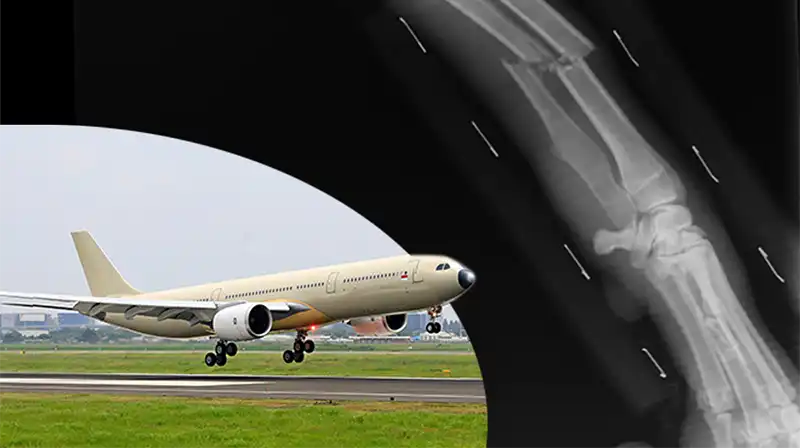Most broken bones on arms and legs are treated with some form of cast – these can be plaster, fibreglass, pneumatic or resin – but anyone hoping to fly with a damaged bone should make sure they know the rules, or they could be stopped from boarding the plane. Here travel journalist and expert Pete Barden looks at what major airlines flying from the UK say about passengers attempting to travel with broken bones.
 Find out if you can fly with a broken leg, arm, or other bone
(Credit: Pxhere.com / Pexels.com)
Find out if you can fly with a broken leg, arm, or other bone
(Credit: Pxhere.com / Pexels.com)
I am not in pain, so will I be allowed to fly?
I need to fly straight away
Is a pneumatic splint okay for flying?
Subscribe for free motoring and travel news here - support independent journalism
My broken bone happened a long time ago
Make sure you have cancellation cover
Don’t leave travel insurance to the last moment
Should I book an extra-legroom seat?
If your leg is in a plaster cast below your knee and you can bend your knee, you will be allowed to sit in a normal seat.
If your plaster cast covers your knee, you won't be able to bend it, so you'll need to talk to your airline about making special seating arrangements.
Some airlines may require you to purchase additional seats in such circumstances.
More travel news
-
What is park and ride airport parking and how to avoid cowboy firms
-
Do I need six months on my passport for France and Spain?
-
How much are drop off charges at all UK airports? Find out here
-
How to speak to a real person at Amazon
-
People who can sign passport photos for you
-
Do I need an international driving permit for France and Spain
-
Alternative routes for beating jams on the M25
-
Alternative routes for the M1 motorway
-
Alternative routes for the M6 motorway
-
Alternative holiday routes for the A303
-
How old are my tyres - find out instantly here
-
What are the black dots on my windscreen for?
-
Are my sunglasses legal for driving?
Author: Pete Barden:
Twitter: @pete_barden
Pete Barden is a qualified journalist who has written and produced for publications including The Sun (thesun.co.uk), New Statesman Media Group, Whatcar? (Whatcar.com) Stuff Magazine (Stuff.tv), Fastcar Magazine (Fastcar.co.uk), Maxim Magazine and UK broadcast stations within the Heart network (Formerly GCAP). Pete specialises in motoring and travel content, along with news and production roles. You can find out more about Pete Barden on LinkedIn.
Professionally written and optimised content will bring new, targeted customers to your website. Contact Pete@petebarden.co.uk





